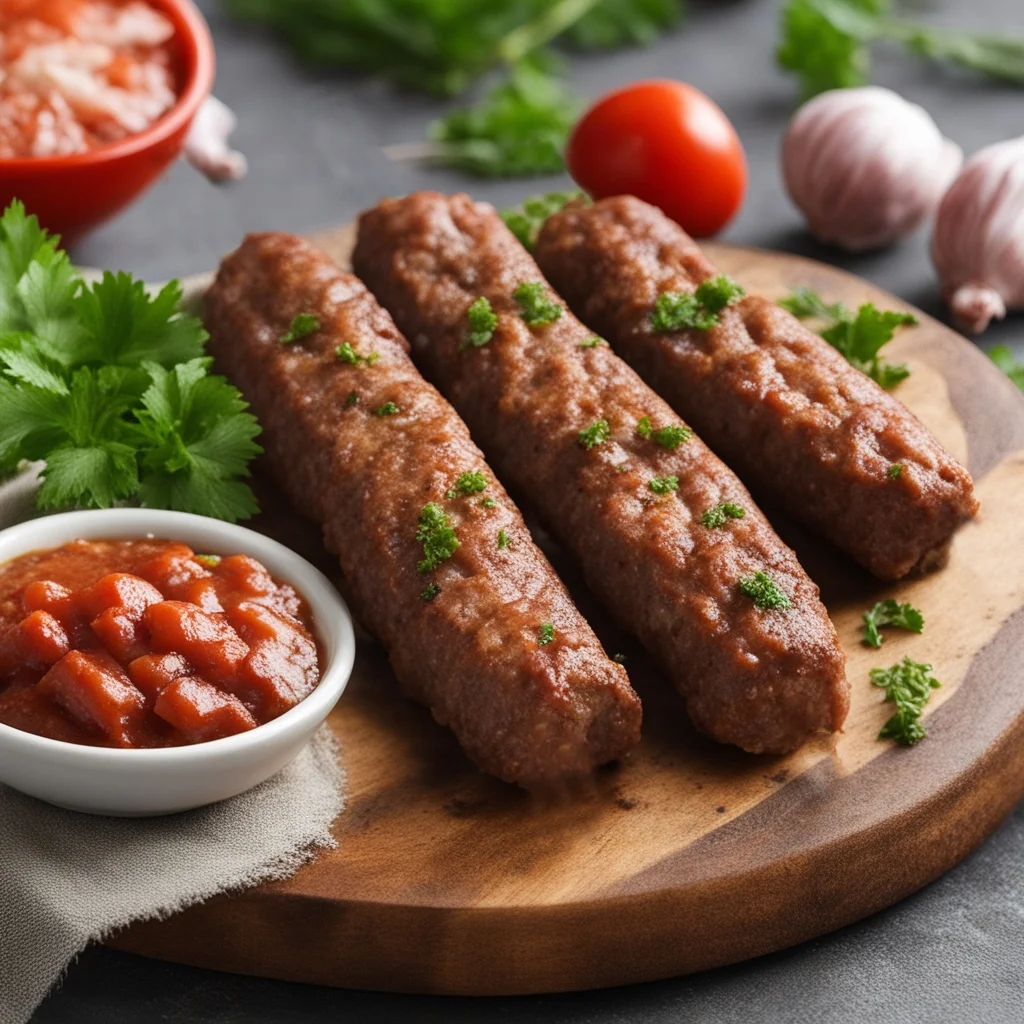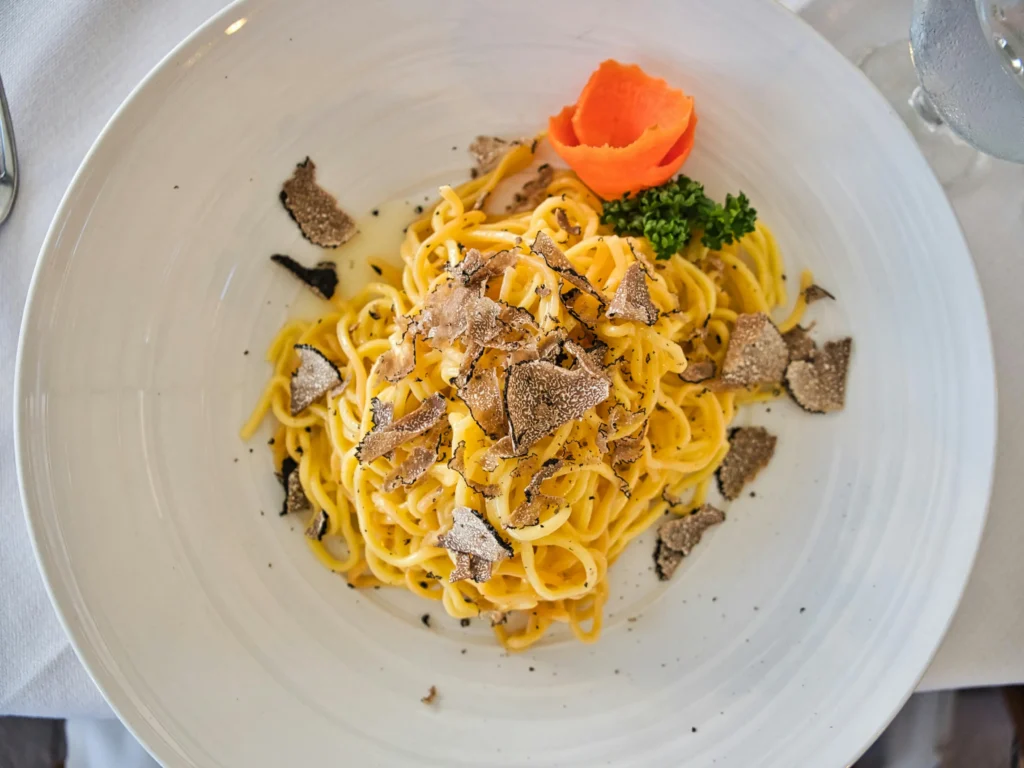Traditional Croatian cuisine
Traditional Croatian cuisine
Traditional Croatian cuisine
Traditional Croatian cuisine
16. September 2024
Feedback: 0
If you travel to Croatia, you’ll not only experience stunning landscapes, historical cities, and crystal-clear seas, but also an incredibly diverse and delicious cuisine. Croatian cuisine is heavily influenced by its neighboring countries and geographic location. You’ll find Mediterranean influences from Italy, hearty dishes from Central Europe, and oriental flavors from the Ottoman Empire. Each part of Croatia has its own specialties, and it’s worth trying a bit of everything. Let me take you on a culinary journey to show you what traditional Croatian cuisine has to offer.
- Peka – The Highlight from Dalmatian Hinterland
- Ćevapčići – The Croatian Meat Rolls
- Sarma – Croatian Cabbage Rolls
- Pašticada – The Dalmatian Feast
- Buzara – Croatian Seafood Style
- Brodet – The Croatian Fish Stew
- Fuži with Truffles – A Specialty from Istria
- Slavonian Kulen – A Spicy Sausage
- Fritule – The Sweet Side of Croatia
- Conclusion
Peka – The Highlight from Dalmatian Hinterland
If there’s one dish you absolutely must try, it’s Peka. This traditional dish is prepared in a special bell-shaped lid (Peka) and slow-cooked over charcoal. It’s a true delicacy found throughout Dalmatia and other parts of Croatia. Peka is usually made with meat (lamb, veal, or chicken), potatoes, onions, and vegetables. The dish is enhanced with spices and olive oil, and the slow cooking process ensures that the flavors deeply penetrate the ingredients.
✪ Tip: ✪
Peka is often only prepared by special request in many restaurants, as it takes several hours to cook. It’s best to ask a day in advance to ensure you don’t miss out on this culinary highlight.
Ćevapčići – The Croatian Meat Rolls
Ćevapčići are one of the most popular meat dishes in Croatia and are an essential part of Balkan cuisine. These small grilled meat rolls are made from a mix of beef and lamb, spiced with various seasonings. They are usually served with onions, Ajvar (a pepper paste), Kajmak (a type of cream), and flatbread.
Whether in a restaurant or from a street stand, Ćevapčići can be found almost everywhere and are the perfect meal when you’re craving something hearty and savory.
✪ Tip: ✪
Order Lepinja, the traditional flatbread, and enjoy Ćevapčići like a true local.
Sarma – Croatian Cabbage Rolls
Sarma is a classic Croatian winter dish made from sauerkraut leaves filled with a mixture of ground meat and rice, slowly stewed in a tomato sauce. The dish has its origins in Ottoman cuisine, but it was adopted by Croatians and is now a staple of their food culture.
Sarma is especially popular during the colder months, as it’s hearty and warming. It’s often served with mashed potatoes or bread and is simply delicious!
✪ Tip: ✪
If you’re in Croatia during the Christmas season, you must try Sarma. It’s a traditional dish on many Croatian holiday tables.
Pašticada – The Dalmatian Feast
Dalmatian Pašticada is a festive dish often served during special occasions like weddings or holidays. This braised roast is cooked in a rich sauce made of red wine, onions, tomatoes, and cloves. What makes it special is that the meat is marinated the day before, which intensifies its flavor.
Traditionally, Pašticada is served with gnocchi. The combination of tender meat, flavorful sauce, and soft gnocchi makes this dish irresistible.
✪ Tip: ✪
If you want to try Pašticada, visit a small family restaurant. Here, the dish is prepared using old family recipes and tastes just like homemade.
Buzara – Croatian Seafood Style
Given Croatia’s long coastline, fish and seafood play a significant role in Croatian cuisine. One of the most popular ways to prepare them is Buzara. Mussels (usually clams or shrimp) are cooked in a sauce made of olive oil, garlic, white wine, and fresh herbs. It’s a simple yet incredibly flavorful dish you can find almost everywhere along the coast.
The Buzara broth is so delicious that you’ll want to use a piece of bread to soak up every last drop.
✪ Tip: ✪
Pair it with a glass of Croatian white wine, such as Malvazija. This light and fresh wine complements seafood perfectly.
Brodet – The Croatian Fish Stew
Brodet (or Brudet) is another classic from the coastal regions. This fish stew is made with various types of fish and seafood, simmered in a tomato sauce with garlic, onions, olive oil, and wine. Brodet is traditionally served with polenta and is a true flavor experience for fish lovers.
What’s unique about Brodet is that the fish is cooked whole, which gives the dish an especially intense flavor.
✪ Tip: ✪
When ordering Brodet in a restaurant, ask which types of fish are used. Sometimes Brodet is also made with crabs or squid, which adds even more depth to the dish.
Fuži with Truffles – A Specialty from Istria
If you’re traveling through Istria, you can’t miss Fuži with truffles. Fuži is a traditional pasta from Istria served with a rich truffle sauce. Istria is famous for its black and white truffles, which are found in the dense forests of the region. The combination of fresh pasta and the intense aroma of truffles is simply heavenly.
✪ Tip: ✪
Visit one of the local markets in Istria and pick up some fresh truffle products as a souvenir. This way, you can take a piece of Croatian flavor home with you.
Slavonian Kulen – A Spicy Sausage
Kulen is a spicy paprika sausage from Slavonia, a region in eastern Croatia. It’s made from pork and lots of paprika, giving it an intense red color and a distinctive flavor. Kulen is often served as an appetizer or snack and pairs perfectly with cheese and bread.
✪ Tip: ✪
Kulen also makes a great souvenir. You can find this specialty in convenient sizes at many markets in Croatia.
Fritule – The Sweet Side of Croatia
To top it off, we can’t forget something sweet. Fritule are small fried dough balls, especially popular during the Christmas season all over Croatia. They are made from a simple yeast dough, often flavored with raisins, rum, or lemon zest. After frying, they are dusted with powdered sugar—perfect for satisfying your sweet tooth!
✪ Tip: ✪
You’ll often find Fritule at small street stands, especially at Christmas markets. Try them fresh out of the fryer—they’re simply heavenly!
Conclusion
Croatian cuisine is diverse, delicious, and rich in tradition. From hearty meat dishes to fresh seafood and sweet treats, there’s something for everyone. Whether you’re exploring the coastal regions or the interior, Croatia has so much to offer in terms of culinary delights that you’ll constantly discover something new.
If you’re still hungry for more, be sure to check out our previous article, Southern Croatia – Hidden Gems and the Most Beautiful Cities You Shouldn’t Miss.

Wir sind zwei deutsche Auswanderer und auf emigres-life nehmen wir Dich mit auf unsere Reise in ein neues Leben.
In unserem Projekt schwingt das Pendel meist in Richtung stressig oder chaotisch und weniger in Richtung tiefenentspannt.
Wenn du also wissen willst, in welches Fettnäpfchen wir als nächstes treten oder welche Hürden vor uns liegen und wie wir sie überwinden, dann bleib dran.
Nächster Blogpost
Die kulinarische Reise durch Kroatien: Entdecke die besten traditionellen Gerichte



 Pin it!
Pin it!

